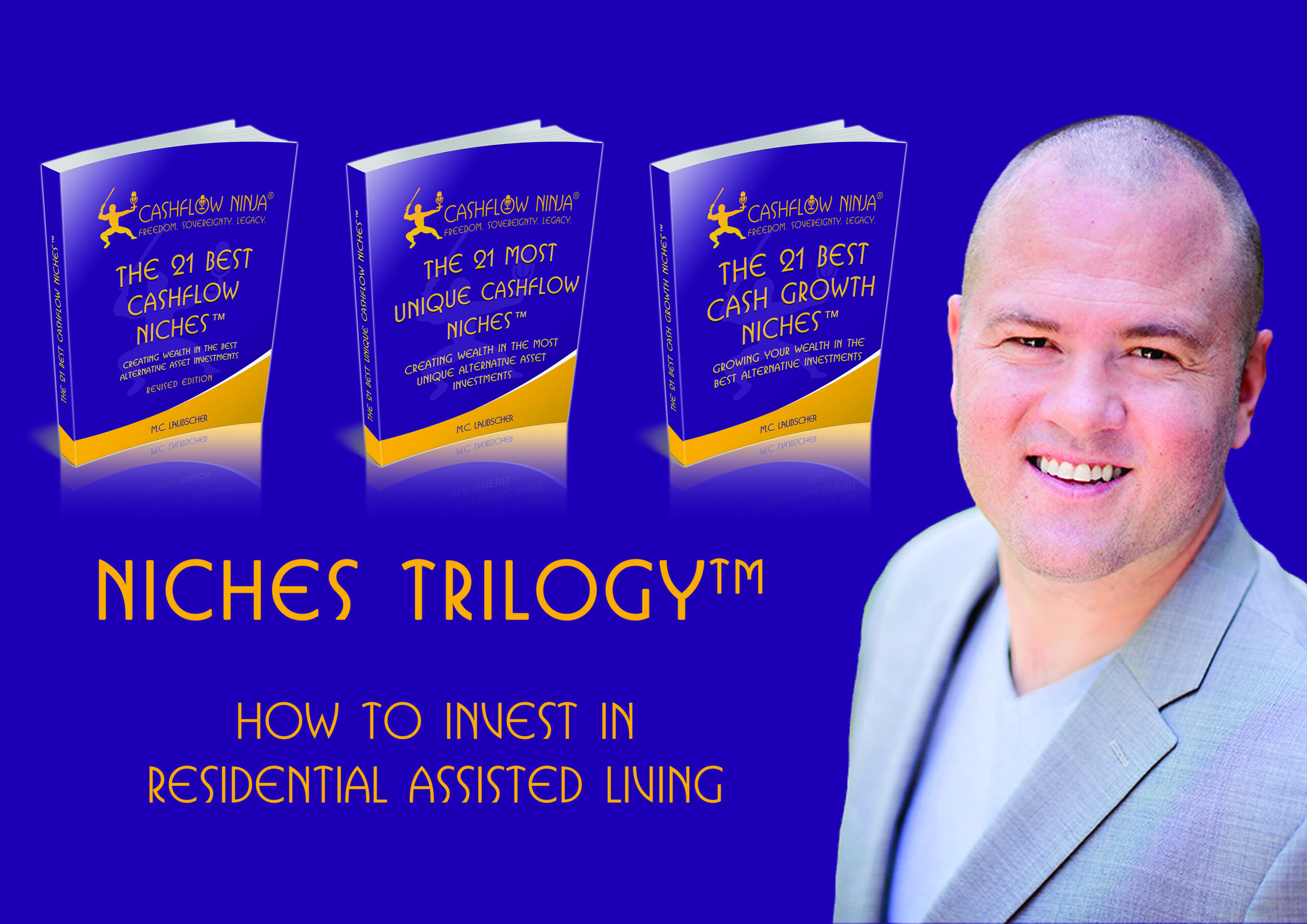
Residential Assisted Living (RALs) is a type of assisted living that operates in homes with fewer residents, usually 5-10. These homes are often located in suburban or residential neighborhoods, providing a more homely environment for seniors.
Why Invest In Residential Assisted Living?
Investors are increasingly drawn to Residential Assisted Living (RALs), and for good reason. Thanks to the growing demand from an aging baby boomer population, it’s a booming sector. The number of individuals over 65 is set to double in the coming decades. That’s a lot of potential residents looking for quality assisted living options.
And what do these seniors want? A home away from home. A place that’s warm, welcoming, and familiar. That’s where RALs come into their own. They offer a cozy, intimate setting that contrasts with more extensive institutional facilities. And this isn’t just about providing comfort to residents – it’s also a smart business move. This home-like environment often translates into higher occupancy rates.
But the benefits continue beyond there. This personalized care and homely ambiance mean that RALs can charge higher monthly rates per resident than more extensive facilities. So, while they may be smaller, they can pack a punch regarding profit margins.
One of the beauties of the RAL model is its scalability. Think of it as a recipe for success. Once you’ve found a winning formula, you can replicate it with additional properties, expanding your holdings and boosting your income.
Of course, let’s remember the real estate aspect. The property is more than just a venue for running an RAL – it’s an investment that can be appreciated over time. So, while the facility’s operations generate income, the underlying real estate can offer an additional return on investment.
Compared to building or buying a large commercial facility, acquiring a residential property to convert into an RAL can be a more affordable entry point into the market. It’s like choosing to renovate a house instead of building a skyscraper – both can yield results, but one requires less upfront investment.
For investors looking to diversify their portfolio, RALs offer an alternative to traditional real estate or stock market investments.
And speaking of robustness, RALs have shown resilience during economic downturns. As essential services, they hold up better than luxury or non-essential services, although it’s worth noting that no investment is entirely recession-proof.
Some RALs may even qualify for reimbursement through Medicaid or other public and private insurance programs.
But investing in RALs isn’t just about dollars and cents. It can also be about making a positive impact on the community. Providing quality care for seniors in a home-like environment can be as emotionally rewarding as it is financially. So, for many investors, RALs represent an opportunity to combine business savvy with a sense of purpose and community service.
The Ecosystem Of Residential Assisted Living
Residential Assisted Living (RALs) is a bustling ecosystem with various key players, each contributing unique skills and resources.
At the heart of it all are the residents – seniors who need assistance with everyday activities. Some may even have cognitive impairments, like dementia, requiring specialized care. It’s their needs that define the RAL experience.
Then, there are the facility owners and operators. They are the stewards of the RAL, ensuring it complies with state and local regulations and delivers high-quality care to residents.
The caregivers and medical staff, including certified nursing assistants (CNAs), licensed practical nurses (LPNs), registered nurses (RNs), and other medical professionals, are providing direct care.
Behind the scenes, administrative staff keep the operations, finances, and resident admissions running smoothly.
Activity directors bring a dash of fun and engagement to the mix. They design and oversee recreational and social activities for residents, promoting physical, cognitive, and emotional health.
Family members play a crucial role, too. They’re involved in decision-making and support, often interacting with facility staff regarding the well-being of their loved ones.
Regulatory and licensing agencies set the standards for RALs. These government entities conduct inspections to ensure facilities operate within legal and safety guidelines.
Suppliers and vendors keep the facility stocked with essential goods, such as medical equipment, food, cleaning supplies, and furniture.
Social workers and case managers assist residents and families with various needs, including transitions, discharge planning, and access to external resources.
Consultants and trainers provide specialized staff training or advise on facility operations, regulatory compliance, and best practices.
Local communities and volunteer groups engage with RALs for events, partnerships, and community outreach.
Finally, real estate developers and investors are the individuals who invest in the construction, development, or acquisition of properties for RALs.
How To Generate Income
When investing in Residential Assisted Living (RAL) facilities, there’s more than one way to turn a profit. An investor’s strategy depends on their business model, and each has unique advantages.
Take the real estate ownership model, for instance. Here, investors purchase residential properties in prime locations and transform them into RAL homes. Once all the necessary permits and licenses are in order, these homes start operating, bringing in a steady monthly cash flow and the potential for property appreciation.
Another approach under the real estate ownership model is leasing. Instead of running the facility themselves, investors lease their properties to RAL operators. It’s a hands-off way of generating a reliable rental income without the day-to-day management of the facility.
Then there’s the owner-operator model. Here, the investor wears two hats: they own the property and manage the daily operations of the RAL facility. While this can be more profitable, as the investor enjoys both real estate and business income, it does call for more time and effort in management, staffing, and resident care. Alternatively, investors can team up with experienced RAL operators, providing the property and capital while the partner handles the nitty-gritty of daily operations. The profits are then shared based on the agreement.
For those who prefer a ready-made solution, some franchise-model companies offer RAL franchises, giving investors the chance to leverage an established business model and brand. While this model can smooth out start-up challenges, it often comes with higher initial costs and ongoing fees.
Investing in Residential Assisted Living (RAL) facilities can be rewarding, offering high-yield opportunities.
The primary revenue for RAL facilities comes from monthly resident fees. These fees vary, influenced by the facility’s size, quality, location, services offered, and the level of care residents require. Once operational costs, staff salaries, maintenance, and other expenses are covered, what’s left over is the investor’s cash flow.
The value of the real estate where the RAL facilities are located can also be appreciated over time, especially in high-demand areas. This appreciation could lead to significant capital gains if the property is sold later.
Investors can add value to their RAL properties and businesses through expansion, offering additional services like specialized memory care or upgrading amenities to attract higher-paying residents, leading to higher monthly fees and increased profitability.
Owning multiple RAL facilities offers economies of scale advantages. Investors can centralize functions like marketing, administrative tasks, or bulk purchasing supplies, creating cost efficiencies.
In addition to standard services, offering specialized services like physical therapy or rehabilitation can open new revenue streams. These services can be included in the monthly fee or charged separately. Partnering with other service providers, such as pharmacies or transportation services, can establish ancillary income streams, earning a referral commission or fee.
Real estate investments, including RAL facilities, come with various tax benefits, including deductions for mortgage interest, property taxes, depreciation, and specific operational expenses.
Some investors use leverage, borrowing money to acquire RAL facilities. This allows control of a more significant asset with less personal capital. While leverage can increase returns, it does involve higher risk.
Finally, exit strategies differ among investors. Some hold onto their RAL investments for long-term steady cash flow. Others may plan to sell the facility to another operator, a larger assisted living chain, or a healthcare-specializing real estate investment trust (REIT).
How To Lose Money
Investing in Residential Assisted Living (RAL) facilities can be profitable, but it has potential pitfalls.
Running an RAL facility is much like conducting an orchestra – it requires precision, attention to detail, and effective management. High overhead costs, misguided staffing decisions, or simple neglect in day-to-day operations can strike a discordant note, affecting the bottom line.
Navigating the maze of state and local regulations is another hurdle. Non-compliance can result in hefty fines, penalties, or even facility closure. Keeping abreast of these ever-changing laws can be daunting, but missing crucial updates can prove costly.
The vulnerability of residents in RAL facilities makes them potential hotspots for litigation. Legal actions stemming from neglect, abuse, or medical errors can lead to financial penalties and tarnish the reputation of the facility.
Vacancy rates are another concern. Empty beds in an RAL facility represent lost revenue. High turnover or prolonged vacancies can significantly impact profitability. This can occur due to ineffective marketing, a tarnished reputation, or if the facility is located in an area with too much competition or insufficient demand.
Underestimating maintenance and capital expenditures can be a pitfall. Older facilities may require more frequent and expensive repairs, eating into profits.
Pricing is a delicate balance. Set it too low, and you risk eroding margins. Set it too high, and you might deter potential residents, leading to higher vacancy rates.
Market oversaturation is another potential challenge. Investing in areas teeming with RAL facilities can spark fierce competition, forcing operators to slash prices or ramp up marketing efforts.
Broader economic factors can also impact the industry. Economic downturns can shrink families’ ability to afford assisted living care, reducing demand.
Debt management is critical if you’ve used leverage to acquire or develop the facility. Fluctuations in interest rates or an inability to manage the debt can lead to financial distress.
Unforeseen events, like pandemics, can hit RAL facilities hard. During the COVID-19 pandemic, many facilities faced increased costs due to safety measures and experienced high vacancy rates.
Conducting thorough due diligence before purchasing a facility is paramount. Overlooking this step can result in unforeseen challenges.
Changes in zoning laws or local regulations can also pose challenges. Local governments might implement new rules that affect RAL facilities’ operations or expansion plans.
Positives and Negatives Of Residential Assisted Living
Positives:
Growing Demand: As the population ages, especially in countries like the US, the need for assisted living facilities increases. With the baby boomer generation entering an age where many require assisted care, there is a steady market for these facilities.
Recession Resilience: Unlike other real estate investments, the demand for elder care remains stable even during economic downturns. This resilience makes RALs a relatively recession-resistant investment.
Steady Cash Flow: RAL facilities often provide a consistent and predictable income stream, especially if they maintain high occupancy rates.
Real Estate Appreciation: Besides operational income, the underlying real estate property can appreciate over time, potentially leading to capital gains.
Tax Benefits: Investing in real estate offers various tax advantages, such as depreciation, which can enhance the overall return on investment.
Personal Fulfillment: Many investors and operators find providing quality care for older people rewarding and fulfilling.
Negatives:
Regulatory and Licensing Challenges: RAL facilities face heavy regulation at the state and local levels, which can be challenging and expensive to navigate.
Operational Complexity: Effectively running an RAL facility requires real estate and healthcare management expertise. It differs from traditional real estate investments and requires a deeper understanding of care provision.
Higher Initial Capital Requirement: Establishing a facility that meets all health and safety standards can be capital-intensive.
Reputation Sensitivity: Resident well-being is crucial, and even isolated adverse incidents can significantly impact a facility’s reputation, affecting profitability and long-term viability.
Liability Risks: Given the vulnerability of residents, there’s a higher risk of lawsuits related to medical issues, slips and falls, or other care-related incidents.
Staffing Challenges: The industry often experiences high staff turnover rates, making it challenging and costly to recruit, train, and retain qualified staff.
Market Oversaturation: In some areas, there may be abundant RAL facilities, leading to fierce competition and potential vacancies.
Economic Factors: RAL investments can be subject to economic fluctuations.
Investment Opportunity Filter™
The Investment Opportunity Filter™ evaluates an investment opportunity based on cashflow, tax benefits, appreciation, and the leverage it provides.
Residential assisted living scores a 4/4 with The Investment Opportunity Filter™.
Residential assisted living can produce significant cashflow, have great tax benefits, and appreciate in value with management and operations. It also allows for leveraging the skill sets, capabilities, networks, and capital of others.
Download all the Niches Trilogy Books:
The 21 Best Cashflow Niches
Digital: https://www.
Audio: https://podcasters.spotify.
The 21 Most Unique Cashflow Niches
Digital: https://www.
Audio: https://podcasters.spotify.
The 21 Best Cash Growth Niches
Digital: https://www.
Audio: https://podcasters.spotify.
Listen To Cashflow Ninja Podcasts:
Cashflow Ninja
https://podcasters.spotify.
Cashflow Investing Secrets
https://podcasters.spotify.
Cashflow Ninja Banking
https://podcasters.spotify.
Share This
Related

898: Tom Dunkel: The Wealth Builders Playbook
My guest in this episode is Tom Dunkel. Tom Dunkel brings more than 30 years of experience in real estate, finance, and investing to his role as Managing Director of Eagle. Known for his disciplined approach and unwavering alignment with investors, Tom personally invests in every deal he presents, ensuring absolute trust and shared outcomes…

897: Eugene Shatsman: How To Grow & Scale Your Business Right Now
My guest in this episode is Eugene Shatsman. Eugene is the Managing Partner of National Strategic Group. Eugene teaches business strategy, consumer behavior, marketing, and what all of us want – how to drive more business into our businesses. His team at National Strategic has over 100 people, and they do a tremendous amount of…

896: Chris MacIntosh: Opportunities Around The Globe Right Now
My guest in this episode is Chris Macintosh. Chris has founded and built several multi-million dollar businesses in the investment arena, including overseeing the deployment of over $30m into Venture Capital opportunities and advising family offices internationally. Before this, Chris built a career at Invesco Asset Management, Lehman Brothers, JPMChase, & Robert Flemings. Interview Links:…
